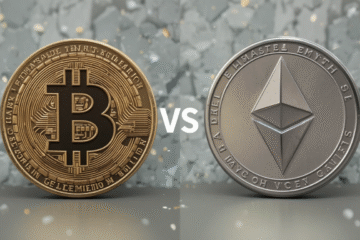
Galaxy Digital to Pay $200M in Settlement Over Terra Promotion Scandal
Michael Novogratz’s crypto investment firm, Galaxy Digital, has agreed to pay $200 million in a settlement over its alleged involvement in promoting the now-defunct cryptocurrency Terra (LUNA).
Galaxy Digital’s Alleged Misconduct
According to documents filed by the New York Attorney General’s Office on March 24, Galaxy Digital purchased 18.5 million LUNA tokens at a 30% discount. The firm allegedly promoted the tokens to drive up their market price while failing to adhere to proper disclosure regulations.
The filing states:
“Ultimately, Galaxy helped a little-known token increase its market price from $0.31 in October 2020 to $119.18 in April 2022, while profiting in the hundreds of millions of dollars.”
As part of the settlement, Galaxy Digital will pay $200 million in monetary relief over three years. The payment schedule includes:
- $40 million within 15 days of the settlement agreement,
- Another $40 million within one year, and
- Two additional payments of $60 million due in the second and third years, respectively.
False Claims and Misleading Statements
The lawsuit further accuses Galaxy Digital and Michael Novogratz of spreading false information regarding Terra’s usage. Specifically, the firm claimed that the South Korean payments app Chai was built on the Terra blockchain, which was inaccurate.
In a press release sent to Bloomberg, Galaxy Digital highlighted:
“The app hosts over 2 million users and generates $1.2 billion in annualized transaction volume.”
However, the filing clarifies:
“These statements were false. They were based on representations by Kwon and Terraform to Galaxy, but Galaxy failed to independently verify them.”
Terra’s Collapse and Market Fallout
The Terra ecosystem, including its algorithmic stablecoin TerraUSD (UST), collapsed spectacularly in May 2022. The crash resulted from a breakdown in the mechanism designed to maintain UST’s peg to the US dollar.
The collapse began when a large UST holder sold a substantial amount of the stablecoin, triggering widespread market panic. This sell-off caused UST to lose its peg, leading to a domino effect. In response, the protocol attempted to stabilize UST by minting new LUNA tokens to buy back UST. However, this inflated the LUNA supply, applying massive downward pressure on its price.
As reported by Cointelegraph at the time, once LUNA’s market cap fell below UST’s, the stablecoin could no longer maintain its peg. The declining value of LUNA and the overinflated supply created a self-reinforcing death spiral, wiping out nearly all of LUNA and UST’s value within hours.
The collapse erased billions of dollars in market capitalization and contributed to a broader cryptocurrency market crash. The fallout also sparked regulatory scrutiny, with the Sonic blockchain’s recent launch of a high-yield algorithmic stablecoin facing skepticism due to perceived similarities to Terra’s failed model.
Source Link
Author: Sb
Comments are closed.
Bitcoin News
-
Ethereum vs Bitcoin: A Deep Technology Comparison for Smart Investors
November 21, 2025











